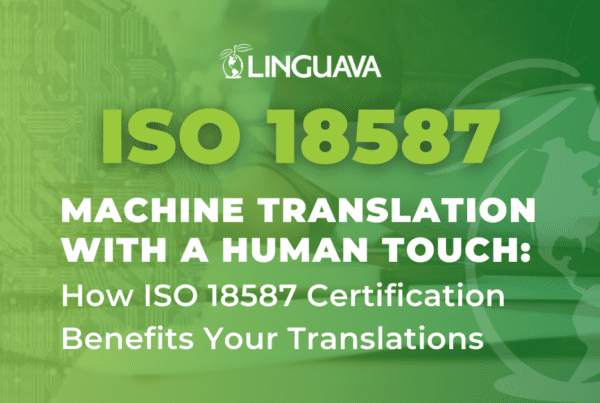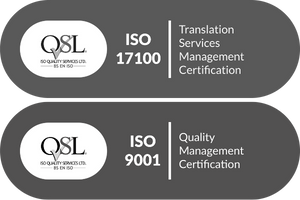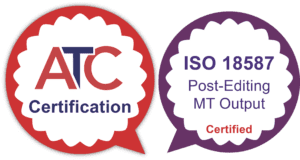Myths in Interpretation and Translation Compliance

Ensuring language access is a basic right for Limited English Proficient (LEP) patients seeking medical help. In the realm of healthcare, many false ideas get in the way of LEP patients receiving the care they deserve. We will debunk eight common myths about language access compliance and stress how essential it is to give all patients meaningful access, no matter their language barriers. Let’s ensure every patient, regardless of language, can get the care they need and deserve.
MYTH #1 – The LSP provides reminder calls to the patient
I can rely on my LSP (Language Service Provider) to provide reminder calls, so my staff don’t need to give reminder calls to LEP individuals.
REALITY
Providing “meaningful access” as required by Title VI requires providing the same services in the same manner to LEP individuals.3 Interpreters may provide reminder calls when booked through your LSP, but this is not a substitute for staff reminder calls if your staff members provide reminder calls or texts to English proficient patients an equivalent service must be provided for LEP patients too.
Benefits of providing a reminder call to patients:
- Your staff can give necessary information to the right people. They have access to ROIs, and know whether the patient has given permission for them to talk to family members or leave a voicemail message.
- Your staff can answer questions: “Am I seeing the same provider as last time?” or “Do I need to be fasting?”
- The patient can cancel or reschedule all in one phone call or text message.
- The patient may recognize your clinic number and answer or call back, but may not answer and cannot call back if an interpreter calls from a blocked number.
- The patient will still get a reminder call if no on-site interpreter is available and telephonic or video remote interpreting is provided instead.
- Automated systems can pull information on patients’ preferred language from their chart so they get reminder calls in their preferred language.
MYTH #2 – I can charge extra for no-shows
I have to provide language access services free of charge, but if an LEP patient no-shows I can charge them extra to recoup the cost of the interpreter.
REALITY
Language access services should be considered part of the cost of doing business. Charging an additional fee to LEP patients who late cancel or no-show is considered a violation of their rights under Title VI and Section 1557 of the Affordable Care Act. In order to recoup the additional cost of patient no-shows when an interpreter has been booked, you may raise the no-show fee across the board, but the fee cannot be higher for LEP patients than for English proficient patients. 1,2
If we have arranged for an interpreter for your visit or procedure, the interpreter service requires a 24-hour notice of cancellation. If you do not show or cancel late, you may be billed for the interpreter fee, in additional to the fees above.
MYTH #3 – I can schedule patients when it’s most convenient for our practice
LEP patients take longer, so I’ll just book them in the afternoon. Then I don’t get behind schedule since we have a Spanish-speaking physician. We should not allow Spanish-speaking patients to schedule with our other physicians because that will cost us more.
REALITY
LEP patients have the right to access language access services in a timely manner during all hours of operation. 4 In addition, if English-proficient patients are able to schedule at their preferred time of day with their preferred provider but LEP patients are not, then LEP patients are not being provided with meaningful access. 3
If their schedules work with the Spanish-speaking physician and they feel comfortable with that provider, great! But if they want to see a different provider or if their schedule doesn’t align with the Spanish-speaking physician’s hours, they have the right to schedule with someone else.
MYTH #4 – Interpretation and Translation increase costs
It’s too expensive to provide language access services.
REALITY
Providing language access services saves money.
LEP patients who face language barriers are less likely to access cost-saving preventive services such as well visits, mammograms, and pap smears, even after considering confounding variables such as literacy, health status, health insurance, regular source of care, and economic indicators. 5,6 But when professional interpreting services are provided, utilization of these cost-saving preventive services goes up. 5,7
Physicians who see LEP patients rely on more frequent and more expensive testing when a professional interpreter is not present. 5,6,7 LEP patients are 60% more likely to go to the ER, and are 50% more likely to be hospitalized than English-proficient patients, even after adjusting for age, sex, medical complexity, residency, and outpatient health care utilization. 6 They are also less likely to adhere to follow-up care instructions and are seen for more follow-up visits. 5,6
But trained, professional interpreters can reduce or even eliminate these disparities. In fact, in three studies, LEP patients with access to trained professional interpreters had equal adherence to follow-up from the ED, equal frequency of tests and equal ED visits and admissions when compared with their English-proficient counterparts.7
MYTH #5 – Interpreters can answer patients’ questions about consent forms
Interpreters can read through consent forms with patients, and answer their questions. The provider doesn’t need to be present.
REALITY
LEP patients have the right to receive the same services as English-proficient patients, provided in the same manner. 3
If the provider usually summarizes the consent form and addresses patient questions, they can do the same with the help of an interpreter. Similarly, if the provider typically reads through the consent form with the patient, they can proceed with an interpreter’s assistance. In cases where patients are asked to read the consent form independently, an interpreter may offer sight translation support for a 2-3 page document. However, interpreters are not able to answer medical questions for patients. If the provider is normally available to answer questions for English-proficient patients, they should be available for LEP patients as well.
MYTH #6 – Interpretation and Document Translation requirements are the same
The requirements for interpreting and translation are the same.
“Prevalent languages” for translation are the same as “prevalent languages” for notifying patients of their language access rights, so I have to translate documents into the top 15 languages in my state.
REALITY
Interpreting services must be provided for all LEP patients. However, translations are required only for the most common languages in your service area.
Signage notifying patients of their language access rights must be posted in the top 15 languages in the state, but the thresholds for document translation are different. 8,9 Vital documents must be translated only if the language is spoken by 10% of the service area or 3,000 individuals, and the threshold for translating all documents is even lower—5% of the service area or 1,000 individuals. There is also an exception if the language meets these thresholds but is spoken by less than 100 individuals—if that is the case, sight translation is acceptable. 8 In most cases, the number of languages that meet these thresholds will be fewer than the 15 languages in which notifications have to be posted.
Way-finding signage is also required in commonly encountered languages under the CLAS mandates, but “commonly encountered languages” is defined merely as “ languages that are used by a significant number or percentage of the population in the service area;” no specific threshold is set.4
MYTH #7 – I can ask the patient to bring family if the interpreter is not available
Our providers prefer in-person interpreters, so we can just reschedule patients’ appointments when an in-person interpreter is not available.
If a patient speaks a language of lesser diffusion (LLD) and it’s difficult to find an interpreter, I can simply ask them to bring a family member.
REALITY
It is a violation of Title VI and the CLAS Mandates to require or suggest that a patient bring a family member or friend to interpret. 4,8 Patients have the right to access interpreting services during all hours of operation in a timely manner. Therefore, if an on-site interpreter is not available, you will need to have an alternative. 4 If you are having trouble booking an interpreter for a language of lesser diffusion, here are some tips:
- Book ahead of time : as soon as the patient schedules their next appointment, call your LSP to book an interpreter
- Have a backup option : Train staff on telephonic and video remote interpreting technology. Make telephonic and video remote interpreting available to patients in the event that an on-site interpreter is not available
- Offer higher rates : If your LSP is not able to consistently provide access to an interpreter for a particular language, consider offering to pay a higher rate for that language in order to secure an interpreter.
MYTH #8 – A patient can never have a family member or friend interpret
I have to work with a professional interpreter, even if patients ask for a family member or friend to interpret.
REALITY
Working with a professional interpreter is actually not a requirement if you offer and the patient declines. If your organization offers access to and explains the benefits of professional interpreting and the patient declines, you can document the offer and refusal of professional interpreting services and allow the patient’s family member or friend to interpret. However, in this situation it is best to have a professional interpreter stand by in case a conflict of interest arises or in case there are issues communicating through the family member or friend.4,8
There is an exception: minor children should not be allowed to interpret, even upon request, except in case of an emergency until a professional interpreter is secured. 4,8
Linguava is your trusted partner in language access, offering a comprehensive range of services to help you stay compliant and provide the best care for your patients. Our team of professional interpreters and translators, equipped with state-of-the-art technology, ensures accurate and timely language support for your patients. From scheduled video interpretation to over-the-phone and American Sign Language interpretation, we have you covered. As an ISO 9001 and 17100 certified language service provider, we prioritize delivering the highest quality care for your patients, ensuring language access that meets the highest standards.
Connect with our sales team today to learn more and receive a free quote for your translation needs.
Sources:
1. https://www.hhs.gov/civil-rights/for-individuals/section-1557/1557faqs/index.html
2. https://www.nad.org/uploaded-documents/advocacy-letter-healthcare-providers.pdf
3. https://www.govinfo.gov/content/pkg/CFR-2000-title45-vol1/pdf/CFR-2000-title45-vol1-sec80-3.pdf
4. https://minorityhealth.hhs.gov/assets/pdf/checked/finalreport.pdf
5. https://minorityhealth.hhs.gov/Assets/pdf/Checked/HC-LSIG.pdf
6. https://bmchealthservres.biomedcentral.com/articles/10.1186/s12913-015-0874-4
7. https://www.ncbi.nlm.nih.gov/pmc/articles/PMC1955368/pdf/hesr0042-0727.pdf
8. https://www.govinfo.gov/content/pkg/FR-2003-08-08/pdf/03-20179.pdf
9. https://www.gpo.gov/fdsys/pkg/FR-2016-05-18/pdf/2016-11458.pdf








